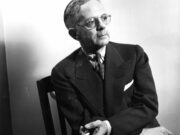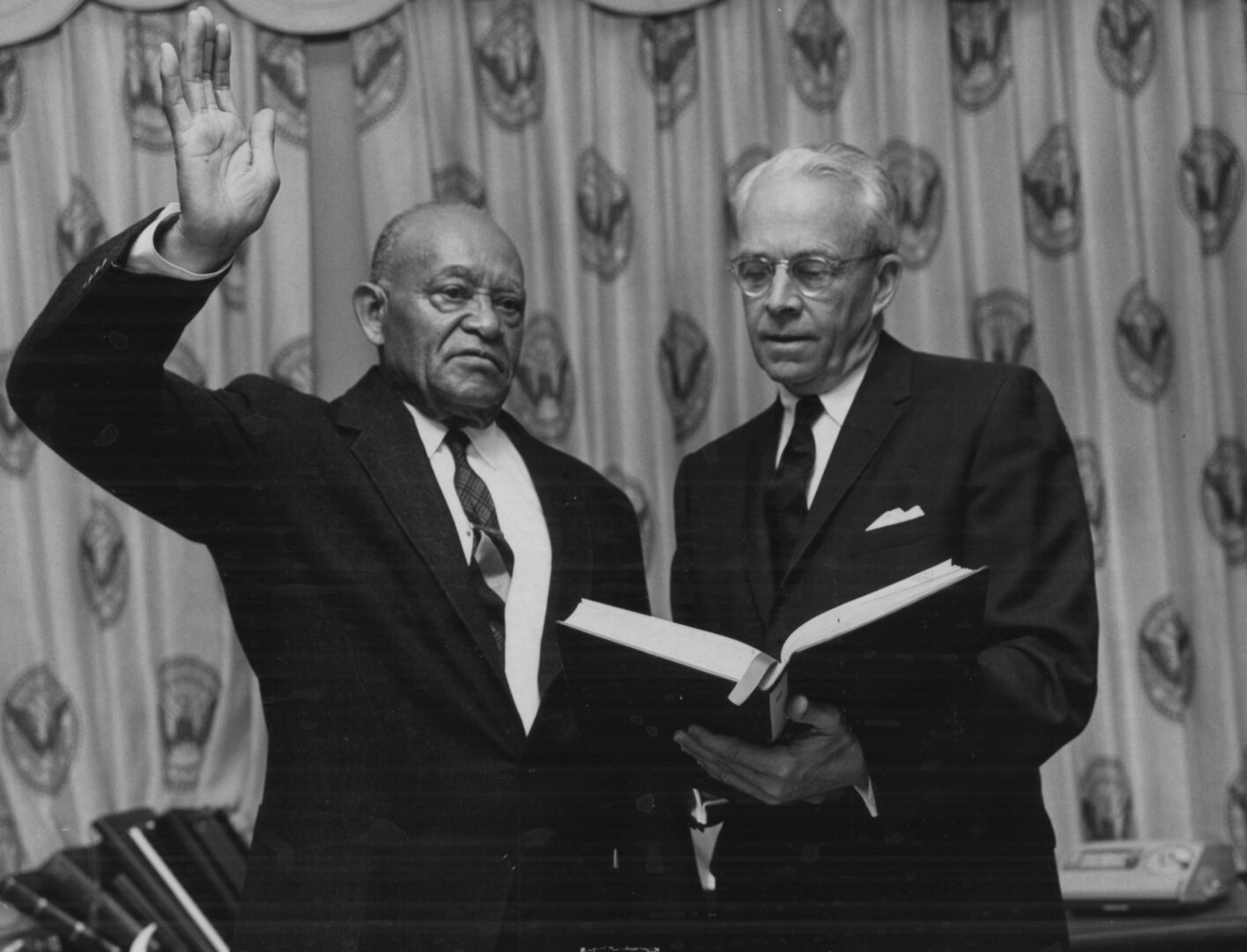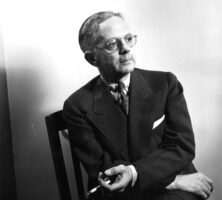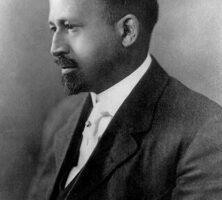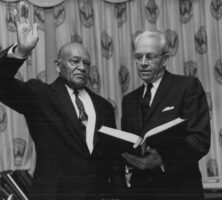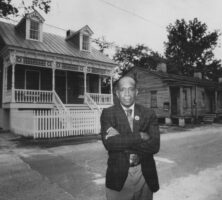The National Association for the Advancement of Colored People (NAACP) has had an unbroken presence in Georgia since 1917. The NAACP State Conference maintains a network of branches throughout Georgia, from cities to small rural counties.
The state branches, despite periods of instability and discontinuity, have been the most effective and consistent advocates for African American civil rights in twentieth-century Georgia. Since the late 1950s Atlanta has hosted the Southeast regional headquarters of this national civil rights organization. Youth branches of the NAACP in Georgia have nurtured many future leaders of various major civil rights organizations, and the state has provided many native sons and daughters to the national leadership over the NAACP’s long history.
Early Years
In February 1909 future NAACP organizers issued “The Call,” a statement protesting lawlessness against Negroes, and began forming the Committee on the Negro. By 1910 the organization had adopted the name National Association for the Advancement of Colored People and had begun publication of a monthly journal, The Crisis, under editor W. E. B. Du Bois. Extensive organization in the North and Midwest and development of antilynching legislation characterized the NAACP’s first seven years. Its organizers shifted focus to the South when they began to see the difficulty of accomplishing legislative goals without southern politicians’ support. The leadership of Jacksonville, Florida, native James Weldon Johnson as executive secretary brought attention to the importance of serving the largest part of the African American population, which resided in the South.
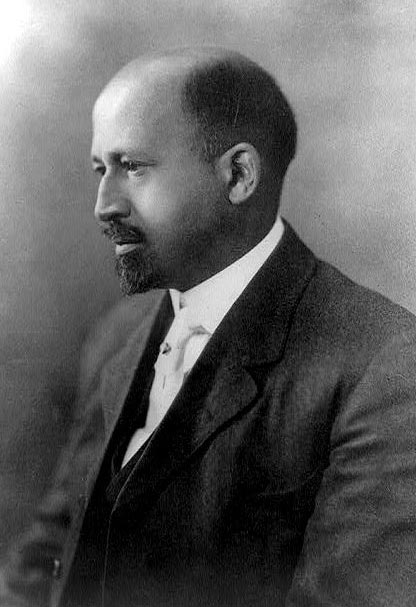
Beginning in January 1917 and up until June 1920, branches were organized in communities around Georgia, including Albany, Americus, Athens, Atlanta, Augusta, Brunswick, Columbus, Cordele, Dublin, Macon, Milledgeville, Rome, Savannah, Thomasville, Valdosta, and Waycross. Many of the earliest branch members came from the professional class of physicians, dentists, businessmen, teachers, and ministers. Established Black newspapers in Atlanta, Rome, and Savannah carried NAACP news releases, and these cities hosted successful early locals that focused primarily on educational improvements for the Black community.
In most Black schools in Georgia’s cities and towns, teachers were expected to teach twice the number of students per day as those in the white schools. In two separate shifts, one in the morning and early afternoon and one from afternoon into the evening, these overworked and underpaid Black educators taught shortened lessons to two sets of large classes. Efforts for elimination of these “double sessions” and the addition of seventh grade and above in African American schools provided an early focus for branches in Georgia’s cities.
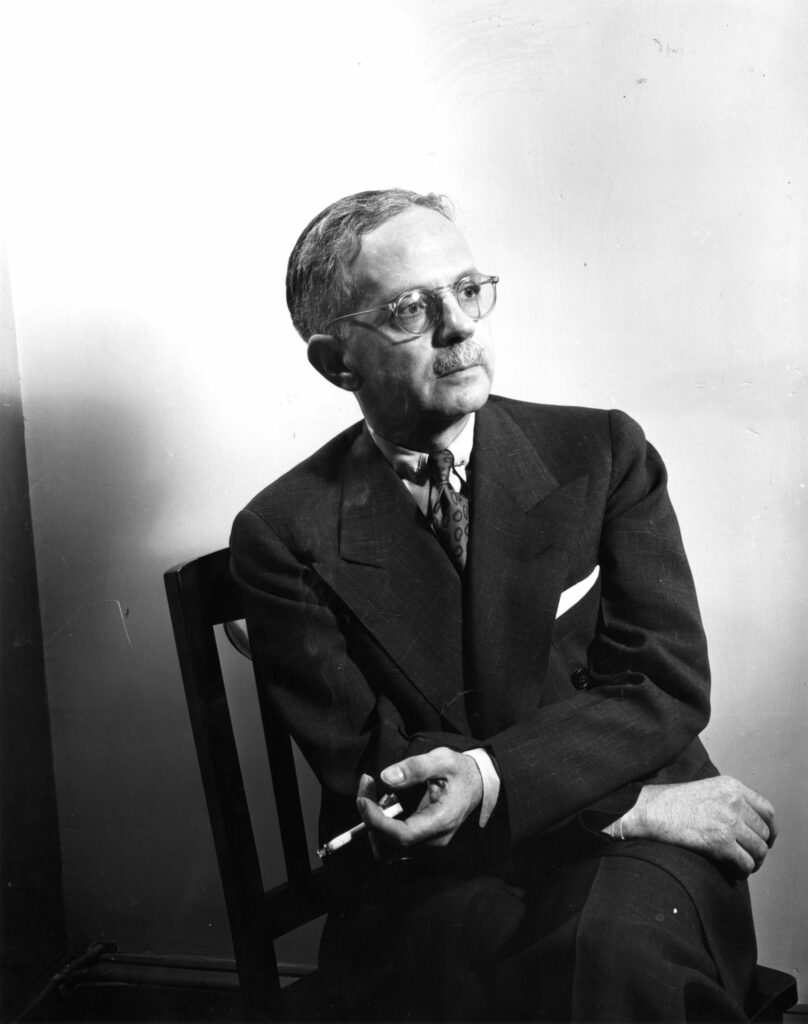
During World War I (1917-18), when many men and women left their communities for military service, shortages of laborers and domestic workers occurred. Black men and women who were self-employed or homemakers were under extreme pressure to work for whites. Many southern communities passed local laws that required all Black people to work outside of their own households. Black communities organized to protest these “work or fight laws,” and their efforts often led to the formation of NAACP branches. Destitute farmers and other rural laborers found it difficult to form branches of the association because of the requirement that fifty people pay one dollar each to receive a charter. Threats of violence against local activists also made organization in rural counties almost impossible at this early stage.
In the immediate post–World War I years, Atlanta served as a refuge for Black Georgians who fled from oppressive violence and peonage in rural parts of the state, and the NAACP branch in the capital often provided refugees legal and financial assistance. But after the national NAACP held its 1920 annual conference in Atlanta, the publicity it received triggered a backlash that hurt the Atlanta branch and virtually paralyzed most branches throughout the state for the next two decades. Only five branches—at Fort Valley, Griffin, Hawkinsville, Monroe, and Newnan—formed during the 1920s.
The NAACP’s official organ, The Crisis, dubbed Georgia the “Empire State of Lynching” because of the state’s horrifying record of racial vigilantism. Walter White of Atlanta became a field secretary for the national office immediately after helping to organize the Atlanta branch in 1917, and in 1930 he became executive secretary of the national NAACP in New York. His work to solve the lynching problem through legal means and his ties to the Atlanta community helped the NAACP to remain steadfast in Georgia during the 1930s and 1940s, when it lost many branches in the southern states because of suppression by law and intimidation by force. A. T. Walden, Georgia’s most prominent Black lawyer and later the cofounder of the Atlanta Negro Voters League, served as president of Atlanta’s NAACP branch from 1924 to 1936. Branches in Augusta, Savannah, and other cities in Georgia survived with varying degrees of success until the next growth period of the organization after World War II (1941-45).
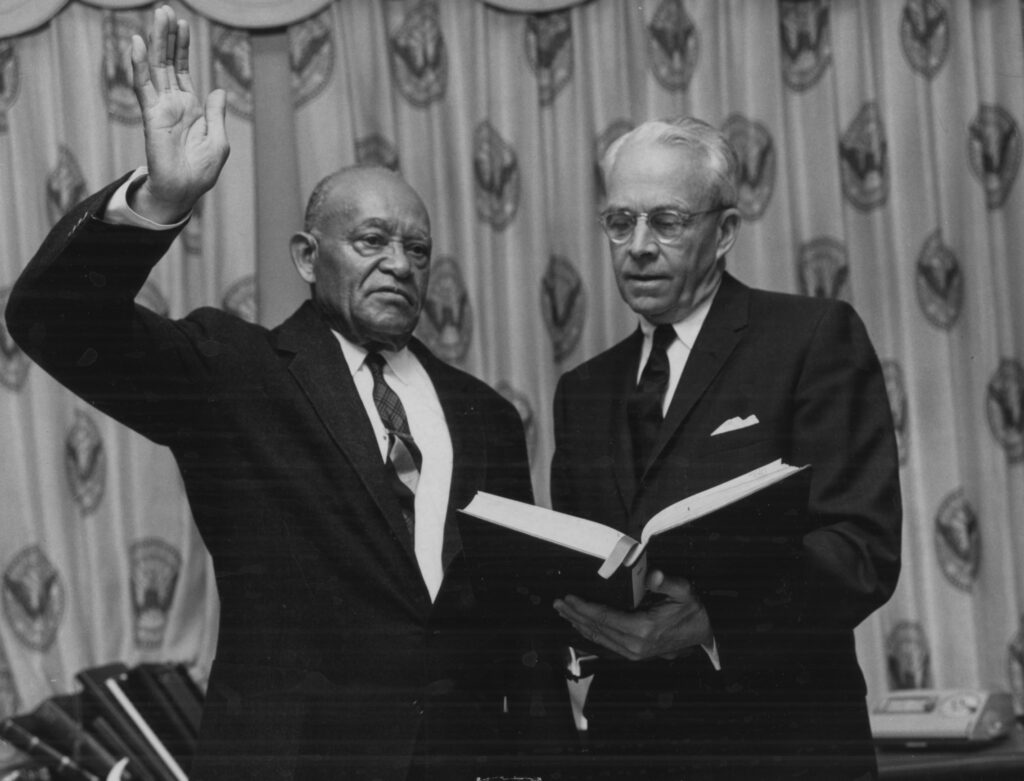
1945 to the Present
NAACP Georgia branch numbers swelled to fifty-five in the year immediately after World War II. The demise of the white-only primary in Georgia (King v. Chapman et al., 1945) gave impetus to statewide voter-registration campaigns. Many whites reacted with violence and hostility to Black registration and voting. This volatile political climate prevented rapid progress on voting rights and over time caused the number of NAACP branches to shrink to less than twenty in the early 1950s. State and local leadership under Governor Herman Talmadge was extremely hostile toward the organization, and violence and economic reprisals against NAACP members were common.
The dominant Georgia branches in the 1950s were in Savannah and Atlanta. The Reverend Ralph Mark Gilbert was president of the Savannah branch during this period and became the first leader of the state conference of NAACP branches. He inspired a new form of protest, in Savannah and elsewhere in the state, that departed from the strictly legalistic approach espoused by the national board. After the 1954 U.S. Supreme Court Brown v. Board of Education decision, which declared the concept of separate but equal schools unconstitutional, new rounds of civil rights activity began. In 1955 W. W. Law of Savannah became the leader of the state organization and was reelected for eight terms. In 1961 the NAACP’s Southeast regional director, Ruby Hurley, hired as Georgia field director the Atlanta native Vernon Jordan, who later became executive director of the National Urban League. Another notable leader was Earl T. Shinhoster, who served as director of the southeast region office in Atlanta for seventeen years.
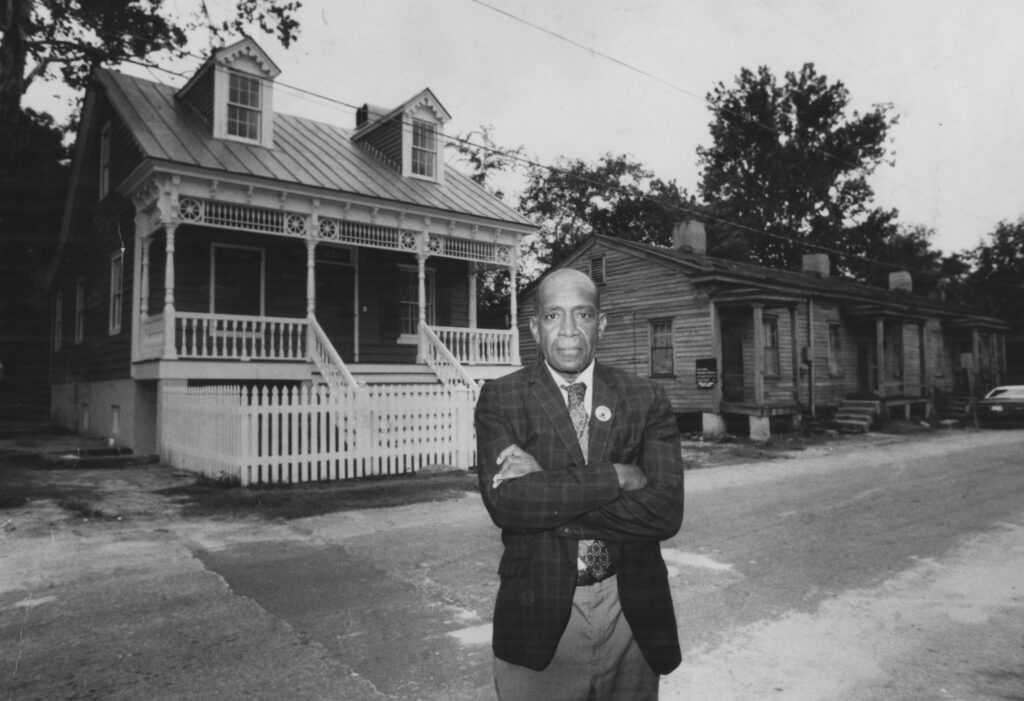
In the 1960s hostility from white Georgia politicians against the NAACP hindered the organization’s growth. Other civil rights organizations came to play a new and complementary role in the African American freedom struggle. The direct action protest of other civil rights groups in the 1960s afforded many youth members and admirers of the NAACP opportunities for leadership and activism.
An influential group that formed its headquarters in Atlanta was the Southern Christian Leadership Conference (SCLC). Activist Ella Baker called together Black southern ministers in 1957 to organize an umbrella group to coordinate the efforts of existing local organizations in urban areas of the South. SCLC’s charismatic leaders, the most famous of whom was Martin Luther King Jr., helped motivate the masses of Black people to participate in marches, boycotts, and other direct protests at the local and even state and national levels. The Student Nonviolent Coordinating Committee (SNCC) was a southern organization committed to a nonviolent but direct approach to protesting discrimination. They targeted the most strife-torn areas of the South and lived in communities, helping to educate Black people about their rights and to cultivate indigenous leadership. One of the areas in which SNCC worked diligently to protest discrimination was in southwest Georgia around Albany.
CORE, or the Congress of Racial Equality, formed in Chicago in 1942 as an interracial organization focused on social justice. Its methods were strictly nonviolent, and its leadership style was democratic. In the 1960s it sponsored numerous projects in the South to test discriminatory laws that clearly represented conflicts between federal and state statutes, such as the segregation of interstate buses and bus stations.
All of these groups increased pressure on local, state, and federal government to recognize racial equality. The pro-NAACP lawyers in Georgia, including Atlantan Donald Hollowell, remained very involved in the legal aspects of promoting anti-discrimination laws, while branch members throughout the state stayed directly engaged in protest and organization. The passage of the Civil Rights Act (1964) and Voting Rights Act (1965) eliminated legal discrimination in the public sphere.
Many Black Georgians joined the NAACP in the years after Martin Luther King Jr.’s assassination in 1968. Robert Flanagan of Atlanta, the state’s field director in those years, reported a new sense of fearlessness and activism, especially in the smaller towns around the state. Promotion of Black voter registration, despite continued intimidation by county registrars in the state, became the focus of NAACP activity. Flanagan went on to become the president of the state conference of branches and to oversee the gradual growth of the organization and the number of Black voters registered in the 1970s. The number of Black elected officials in Georgia has increased steadily since that period.
More recently the NAACP has focused on discrimination in the private sector, especially where it hinders economic opportunities for minorities. The NAACP branches follow and support the strategic initiatives established by the national board through membership dues and participation in activities at the state and local level. Many of these initiatives are handled by the NAACP legal department, which seeks to press cases, especially class actions, that have broad significance in mitigating discrimination in private businesses and corporations. Voter registration continues to be an important emphasis for the NAACP at the local, state, and national levels. In addition, each local branch provides a contact point for complaints of racial discrimination at the local level, which can then be investigated by the field and branch services of the national organization if necessary.


